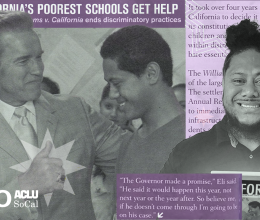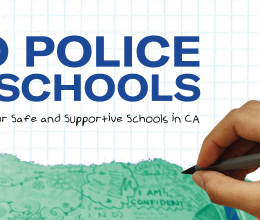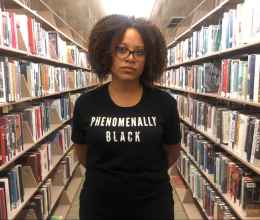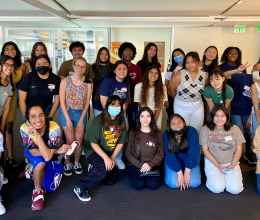
Please attribute the following statement on the Great Public Schools Initiative to Hector Villagra, ACLU SoCal executive director:
“As an organization committed to protecting the constitutional rights of all children to equal educational opportunity, ACLU SoCal supports efforts to expand and improve educational opportunities for California’s public school students, especially at schools that serve predominantly low-income students of color. ACLU SoCal is generally supportive of expanding high-quality public education options for students and families, including charter schools, but only if those options are free and open to all students and do not employ policies or practices that exclude certain students from attending or maintaining enrollment.
The state of California has the ultimate obligation under the state constitution to ensure that students receive equal educational opportunity. We believe this includes, at a minimum, ensuring that schools have the resources necessary to provide a full day’s education that is reasonably likely to meet the needs of all of the children that actually attend the school.
Sadly, this is not the case in California’s public school system, and in particular at some traditional public schools that serve almost exclusively low-income students of color. As but one example, the ratio of students to counselors in California’s public schools is 945:1, ranking dead last among the 50 states and nearly double the national average of 477:1. This is just an average, and the shortages are not distributed equally across the state. Rather, they fall disproportionately, if not primarily, on schools serving low-income students of color.
Given this reality, we commend community and philanthropic efforts to invest directly in schools in our neediest communities and to support community and advocacy efforts to hold schools, local education agencies, and the state accountable for delivering a high quality education. Although the state retains the ultimate obligation to ensure educational equity for all students in California’s public schools, supplemental support from private sources can make a material difference for our neediest students, if invested responsibly and fairly.
The Great Public Schools Now Initiative, which has generated considerable public attention in recent months, represents a significant investment—reportedly with the potential to include hundreds of millions of dollars—in schools that serve some of the most impacted communities in Los Angeles. Such an infusion of foundation and private philanthropic resources is sorely needed and could expand the educational opportunities for tens of thousands of students, almost all of whom are low-income and students of color.
ACLU SoCal praises the vision and commitment to invest in these communities. Such a substantial and collective effort to confront the persistent and ugly disparities in educational outcomes for ow-income students of color is sorely needed. It can challenge our leaders at the state and local levels, and engage the broader public, to confront the difficult questions of why after years of reform it remains true that the educational future for some students continues to be dictated more by the zip code of their birth than by their abilities, gifts, and hard work.
Based on our understanding of the current proposal, however, we cannot offer unqualified support. Although we understand that there recently have been discussions about expanding the scope of the investment, under the current draft of the proposal, the funds will be available only for charter schools and expanded magnet programs, and it includes no guidelines or criteria to ensure that the schools are truly open and available to all who wish to attend, including the most disenfranchised residents of these communities.
Moreover, despite the recognition that these neighborhoods include the highest concentrations of students with the greatest needs, the current proposal includes no provision or consideration for the traditional public schools that will continue to operate in these neighborhoods. There are legitimate questions about the financial burden that expanding charters, magnets, and other schools of choice may impose on traditional public schools, e.g., by taking away revenue from neighborhood schools and reducing educational opportunity for the students who remain there. We have not seen any aspect of the proposal that would protect the rights of students, parents, and teachers who choose to remain in the traditional public schools.
Similarly, although by no means universally true, there are examples where schools of choice do not serve high-need students in proportion to their representation in the underlying area or in comparison to peer schools. At times, this outcome appears to be by design, with the school explicitly excluding or allowing the exclusion of certain students; at others, it may be an unintended consequence of the charter school enrollment system. Charter school enrollment requires initiative on the part of parents to learn of available charter schools in the neighborhood, to obtain and complete enrollment forms, and, in some cases, to attend orientation sessions. Parents who do not speak English, parents who are ill or have limited time due to other commitments, or parents who – for a myriad of potential reasons – do not or cannot take the initiative required for their child’s charter school enrollment are assigned by default to public schools. Likewise, children who cannot attend school regularly, who cannot comply with the extended hours of many charter schools, or who have learning difficulties may be less comfortable in high-performing charter schools and gravitate by default to conventional district schools. These factors may result in a more challenging population for the traditional public schools than in charter schools.
Although charter schools are exempt from most of the laws in the Education Code, they are bound by several critical civil rights laws. Most fundamentally, charter schools are not exempt from the California or United States constitutions. See Wilson v. State Bd. of Ed., 75 Cal. App. 4th 1125, 1137 (1999) (“[C]harter schools are part of California’s single, statewide public school system”). Students attending charter schools are thus protected by the First Amendment rights to freedom of speech, assembly, and religious freedom; the Fourth Amendment’s provisions on search and seizure; the Fourteenth Amendment right to equal protection under the law; and rights secured by the California Constitution, including the right to equal educational opportunity. Charter schools also must comply with federal laws, including prohibitions on discrimination based on race, ethnicity, gender, and disability; requirements to provide special education to students with disabilities; and requirements to ensure that English Learners can overcome barriers to equal participation in their education, among others.
Not all students in the targeted neighborhoods will be able to access and benefit from the increased resources and opportunities this investment will make possible. If implemented, the proposal would create winners and losers among students and families who already face extraordinary challenges. Moreover, we worry that, despite the substantial investment it represents, this aspect of the proposal will perpetuate existing dynamics that have made it easier for leaders and the broader public to dodge the difficult questions about why our current system fails so many of our neediest students. Finally, as large as this philanthropic investment is, we must recognize that it only represents a small amount relative to taxpayer funding of public education, and there is no guarantee that the investment will persist indefinitely.
We hope that the proposal will continue to evolve based on public discussions and community feedback. We briefly identify three possible changes that we believe would strengthen the proposal and would address our concerns:
- Make this a true investment in communities: Rather than making funding and other supports available only to charter schools and new magnet programs, the initiative should formally commit to investing in all aspects of the public K-12 education system in the targeted communities. This would entail supporting new charter and magnet schools, and working creatively to improve the educational programs at the traditional neighborhood public schools that will continue to serve students in these communities, including shoring up resources lost due to declining enrollment and ensuring the remaining program is appropriate to the needs of the students who remain. This more comprehensive approach represents, in our view, a real investment in improving the education opportunities of all students in those neighborhoods and will ensure that the program does not create winners and losers among the students.
- Ensure that all schools receiving support are free and open to all students who wish to attend. We believe the initiative should explicitly condition receipt of funds on assurances and the adoption of policies and practices that are reasonably likely to result in a student body that is reflective of the demographics in the underlying community. This would entail prohibiting recipients from adopting polices or practices that explicitly preclude some students from participating or that are reasonably likely to have the effect of doing so. Although by no means the predominant practice around the state, some charter schools and magnet programs have, for example, denied enrollment or reserved the right to disenroll students who do not maintain a specified GPA, are not proficient in English language arts (which necessarily disadvantages English learners and many students with disabilities), or have poor attendance. Others have required parents or guardians to provide a Social Security Number or commit to providing service hours, which constitutes an illegal fee. If the goal is to expand access to high-quality educational offerings, such opportunities should be available to all students, especially the most disadvantaged.
- Study how the expansion of schools of choice impacts the nearby traditional neighborhood schools. Many studies or papers purport to measure the interaction between public charter schools and traditional public schools (in terms of enrollment, outcomes, and/or governance and finances). Yet partisans in the related policy debates have consistently disputed the findings by challenging the methodologies. This initiative presents an opportunity to assess, in real time, how the expansion of schools of choice in certain communities affects the existing neighborhood schools. Beyond the additional resources brought into these communities, this initiative has the potential to contribute significantly to our understanding of school improvement and advance the discourse around school reform to a more constructive place. Perhaps most critically, the initiative must be careful to consider all relevant factors when evaluating schools and determining which schools are “high quality.” For instance, when assessing or comparing schools, the initiative must take into account factors such as percentage of English learner students enrolled, percentage of foster youth enrolled, and data on school climate, among others in order to provide a fair, accurate, and complete understanding of school effectiveness.
Contact: Victor Leung at 213.977.5219, vleung@aclusocal.org







